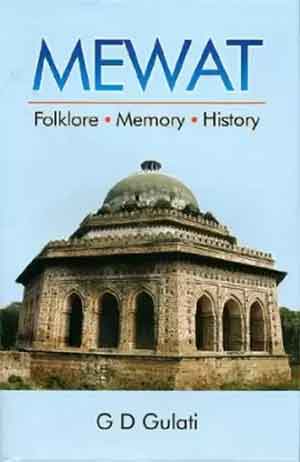The recent highly unfortunate communal violence in Mewat region has drawn much comment, including appeals for unity and harmony. However enough attention has not been given to the rich tradition of unity and harmony that has been very much a part of the history of this region. A better and wider awareness of these will contribute to creating a Mewat based on peace and unity.
The Mewat region is spread over parts of Haryana, Rajasthan and Uttar Pradesh. Despite its proximity to Delhi and despite a modern industrial and commercial hub being a central part of this, the Mewat region has been lagging behind in several development indicators.
A study by Dr. G.D.. Gulati, who taught history in Delhi University for several years, which emphasises the rich traditions of communal harmony in this area, deserves attention for the positive contribution it can make in bringing together and strengthening the tradition of harmony and unity in this area which sometimes can gets marginalized under other pressures.
 This study in the form of a collection of research papers has been published as a book titled ‘Mewat – Folklore, Memory, History’. Dr. G.D. Gulati, who is known widely for his work in medieval Indian history, has given special attention in this book to making it more relevant for present social needs. Several quotes are given in local dialect. Sections in Hindi and Urdu have been retained for their linguistic flavour.
This study in the form of a collection of research papers has been published as a book titled ‘Mewat – Folklore, Memory, History’. Dr. G.D. Gulati, who is known widely for his work in medieval Indian history, has given special attention in this book to making it more relevant for present social needs. Several quotes are given in local dialect. Sections in Hindi and Urdu have been retained for their linguistic flavour.
Four aspects emphasised by this book deserve special mention. Firstly, Hindu and Muslims used to fight side by side against foreign invaders. An example in the alliance of Hasan Khan Mewati and Rana Sanga. Hasan Khan Mewati came to the help of Rana Sanga in the famous battle of Khanua and sacrificed his life fighting on his side. He is remembered as a patriot in Mewat and his alliance with the Rana Sanga is also celebrated. One song remembers them as—Yeh Mewati, veh Mewari mil gaye dono sainani , Hindu Muslim bhaav chhor, mil baithe do Hindustani.
Secondly, this book emphasises many aspects of a mixed cultural legacy of Hindus and Muslim The Meos of Mewat, a Muslim community, still erect Bhairon Ji Ka Chabutra to honour a local deity. Several of them also celebrate Hindu festivals, this book points out.
Thirdly this book emphasises the contribution made by sufis and saints of this region. Lal Das, Charan Das, Sahjo Bai, Allah Baksh, Shah Chokha and others attracted followers from diverse religion communities and became symbols of communal harmony and unity of all people. Their shrines are still visited by followers of all communities. Sant Laldas in particular is widely respected by the people of Mewat. Sant Charandas established a ‘silsilah’ corner at Delhi in 1730. It is believed that Muhammed Shah, the Mughal emperor used to come for his ‘darshan’. Churh Sidh was first a cowherd are then became a saint respected by both Hindu and Muslims.
Last but not the least the book emphasises the unity of Hindu and Muslims in the initial struggle against the British particularly in 1857. There are several vivid descriptions of the initial successes of this united action. Dr. Gulati writes,
“When about 300 sepoys from Delhi marched into the Gurgaon district on 11th May (afternoon) 1857 they found great support from the local populace. Hundreds of peasants from the neighbouring villages and artisans and poor people from the towns of Gurgaon swelled the sepoy’s ranks in no time. A few impoverished feudal nobles like Nawab Ahmed Mirza Khan and Nawab Dula Jan also joined them. It is interesting to note that the rebels did not entrust their leadership to the two newly arrived feudal chiefs, but kept it on their own hands. W. Ford, the Collector – Magistrate of Gurgaon tried to check the rebels of Gurgaon at Bijwasan, a small village, 12 kms. from Gurgaon in the morning of 12th May. But he failed. The rebels next attacked Gurgaon, the seat of the district administration. Ford made another attempt to repulse the rebels, but he failed this time also.
“…In Mewat, the sturdy and warlike Mewatis came out in large numbers and formed a dhar (a crowd turned into a somewhat organised gathering) to finish the British rule.”
On the basis of unity of various religious communities, the Mewatis made several courageous advances but ultimately the British forces prevailed. They were not only very cruel to freedom fighters but also misrepresented them as dacoits for a long time, leading to even more neglect and deprivation of the region.
The several aspects of unity and harmony of Mewat region need to be better known and this aspect of the discourse should be taken to people.
Bharat Dogra has contributed several short biographies of freedom fighters and books on freedom struggle including ‘When the Two Streams Met’ and ‘Azaadi Ke Deewon Ke Dastavez’.















































